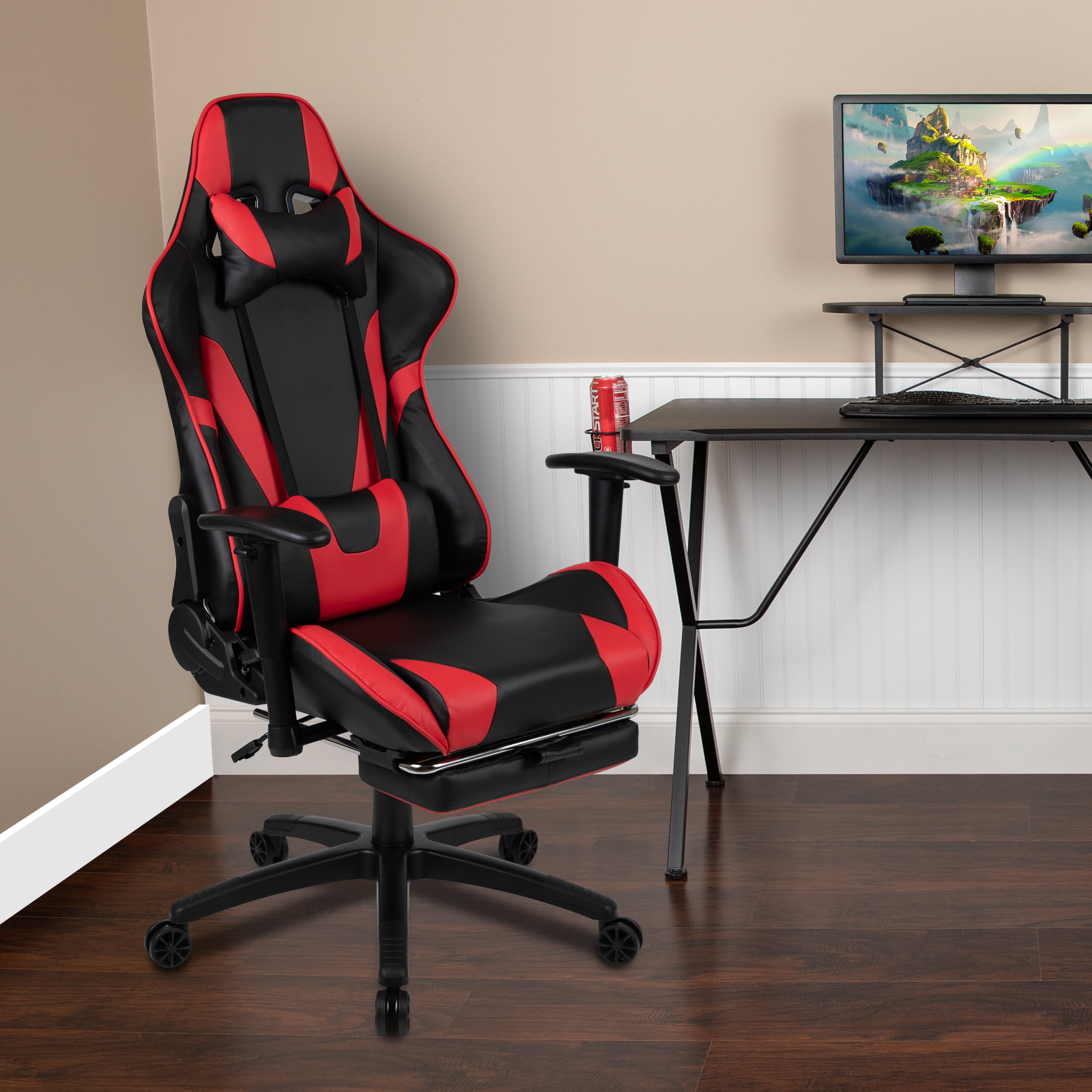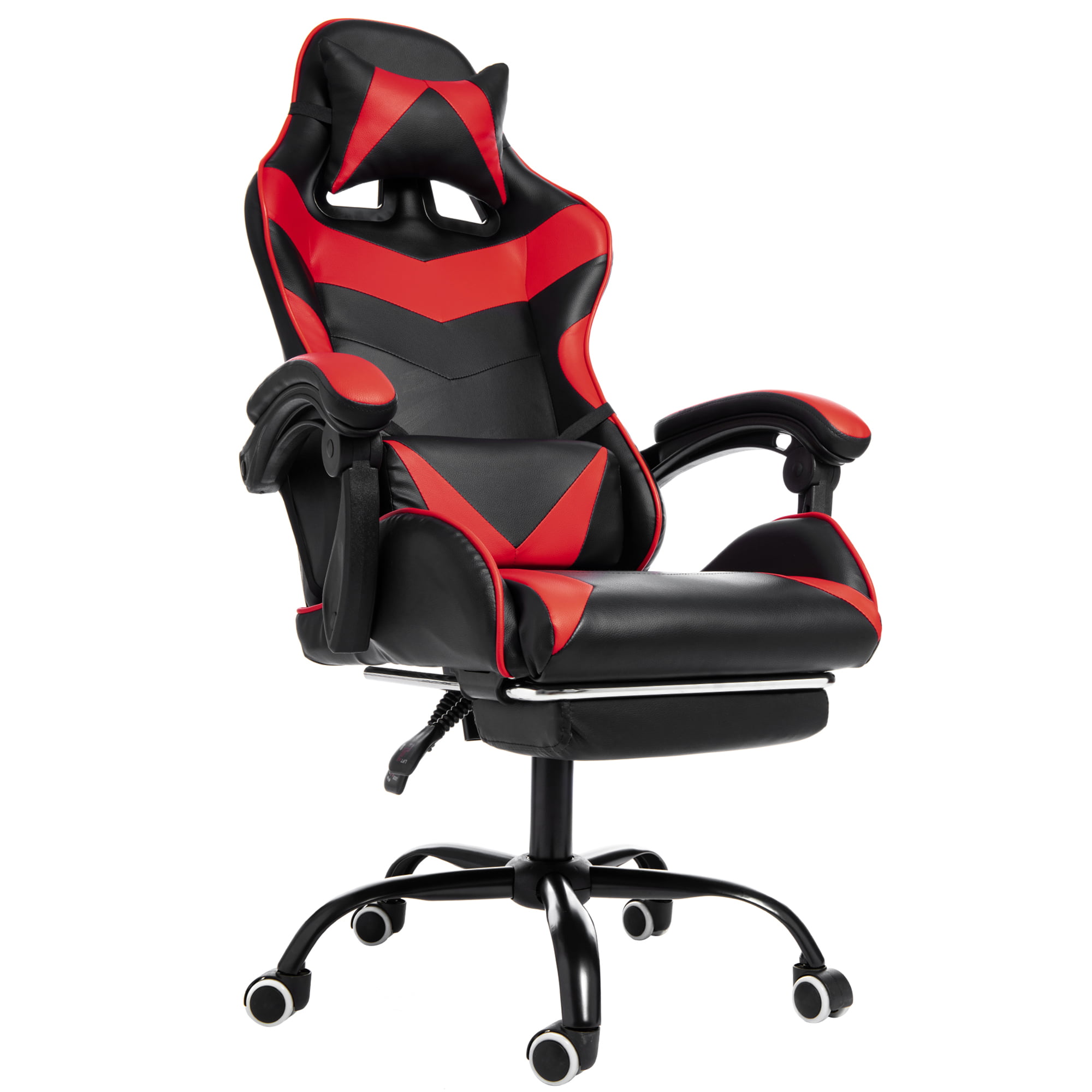Design Aspects of Red and Black Computer Chairs

Okay, so you’re thinking about getting a new computer chair, right? And you’re digging that red and black combo? It’s a seriously stylish choice, adding a touch of edgy cool to your workspace. Let’s dive into what makes these chairs so awesome.
Design Styles of Red and Black Computer Chairs
Red and black is a versatile color scheme that works across various chair designs. This table breaks down some popular styles and how they utilize this bold pairing.
| Style | Color Combination Details | Material Used | Ergonomic Features |
|---|---|---|---|
| Racing Style | Often features predominantly black with red accents on stitching, stripes, or logos. Think sporty and aggressive. | Usually PU leather or faux leather for a sleek, durable finish. | Adjustable height, lumbar support, sometimes headrests for added comfort. |
| Minimalist | Clean lines and a simple design, with red used sparingly as a highlight color on the base or accents. | Often uses a combination of high-quality fabric and metal for a sophisticated look. | May feature adjustable height and tilt mechanisms, focusing on simplicity and functionality. |
| Ergonomic | Red and black can be used in a variety of ways, from subtle accents to more prominent color blocking, depending on the manufacturer’s aesthetic. | Mesh, fabric, or a combination of materials to promote breathability and support. | Features like adjustable lumbar support, armrests, headrests, and tilt mechanisms are crucial. |
| Modern/Contemporary | Bold color blocking with equal parts red and black, or a more subtle use of red as an accent against a black base. | A mix of materials is common: PU leather, fabric, and metal are often used together for a visually interesting and durable chair. | Height adjustment, tilt, and lumbar support are common features. Some may even include integrated heating or massage functions. |
Materials Used in Red and Black Computer Chairs and Their Impact
The materials used significantly impact a chair’s comfort and durability. Here’s a breakdown:
Red and black computer chair – Choosing the right material depends on your priorities. Do you value breathability above all else? Then mesh might be ideal. Need something luxurious and durable? Leather is a great choice. Consider your climate and personal preferences when making your selection.
- Leather (real or PU): Offers a luxurious feel, is durable, and relatively easy to clean. However, it can be less breathable in warmer climates.
- Mesh: Highly breathable, making it ideal for warmer climates. Offers good support but might not be as durable as leather over the long term.
- Fabric: A wide range of fabrics are used, offering varying levels of breathability and durability. Generally more affordable than leather or high-end mesh.
Aesthetic Appeal of Red and Black Color Schemes
The strategic placement of red and black dramatically affects the chair’s overall look. For instance, a black chair with red stitching adds a subtle pop of color, while a chair with large red panels against a black base creates a bolder statement. Using red accents on the armrests or base can create a visually interesting contrast. A predominantly black chair with red highlights can appear sleek and sophisticated, while a chair with equal parts red and black can be more daring and eye-catching. The balance between the two colors determines the final aesthetic.
Ergonomics and Functionality of Red and Black Computer Chairs

Choosing the right computer chair is seriously crucial, especially if you’re spending hours glued to your screen. In Jakarta Selatan’s fast-paced lifestyle, comfort and functionality are non-negotiable, especially when it comes to your workspace. Let’s dive into the ergonomics and features of those stylish red and black computer chairs.
Ergonomic Feature Comparison
This table compares ergonomic features across different price points of red and black computer chairs. Remember, “high-end” doesn’t automatically mean “best for you”—it’s all about finding the right fit.
| Feature | High-End Chair Example (e.g., Herman Miller Aeron) | Mid-Range Chair Example (e.g., Steelcase Leap) | Budget Chair Example (e.g., Amazon Basics) |
|---|---|---|---|
| Lumbar Support | Adjustable lumbar support with multiple settings for personalized comfort. Often features a responsive mechanism that adapts to the user’s back. | Adjustable lumbar support, possibly with a single lever adjustment. May provide adequate support but lack the fine-tuning of high-end options. | Basic lumbar support, often fixed and may not be sufficient for prolonged sitting. |
| Adjustability | Height, tilt, armrest height and width, and lumbar support are all highly adjustable. May also include seat depth adjustment. | Height, tilt, and armrest height are adjustable. Lumbar support adjustment may be limited. | Limited adjustability, primarily height adjustment. Armrests may be fixed or have limited adjustment. |
| Overall Posture Support | Designed to promote a neutral spine posture with excellent support for the entire back, encouraging proper alignment. | Provides good posture support, but may require more conscious effort from the user to maintain optimal posture. | May not provide sufficient support for maintaining proper posture, potentially leading to slouching and discomfort. |
Impact of Chair Design on Comfort
Prolonged sitting in an improperly designed chair can lead to significant discomfort and long-term health issues. Back pain, neck stiffness, and overall fatigue are common consequences of poor ergonomic support.
The chair’s ability to support the natural curvature of the spine is paramount. Insufficient lumbar support forces the back muscles to work harder, leading to strain and pain.
Adjustability is key. A chair that doesn’t allow you to customize the height, tilt, and armrests to your body will likely result in discomfort and reduced productivity.
Chair Adjustment Mechanisms
The mechanisms for adjusting red and black computer chairs vary, but here are some common ones:
- Height Adjustment: Usually a pneumatic gas lift mechanism controlled by a lever under the seat. This allows for easy raising and lowering of the chair to accommodate different desk heights and user leg lengths.
- Tilt Adjustment: Many chairs offer tilt adjustment, often controlled by a lever under the seat. This allows the user to recline slightly, relieving pressure on the spine and promoting better blood circulation.
- Armrest Adjustment: Armrests can be adjusted in height, width, and sometimes even angle. This allows for personalized positioning, reducing strain on the shoulders and arms. Mechanisms vary; some use levers, while others may have knobs or push-button controls.
